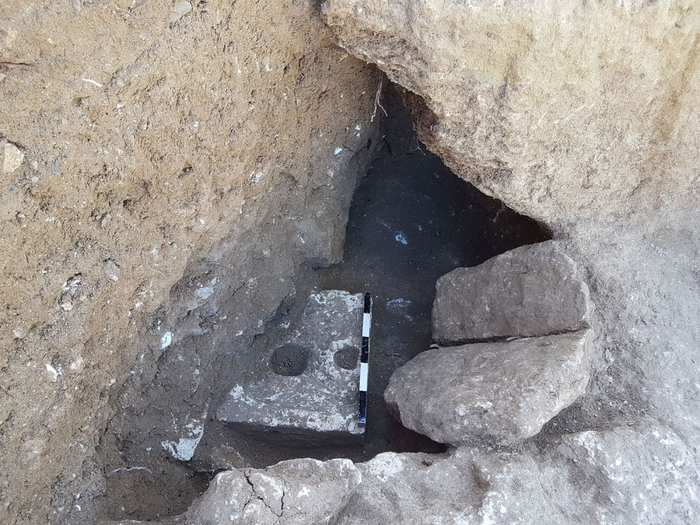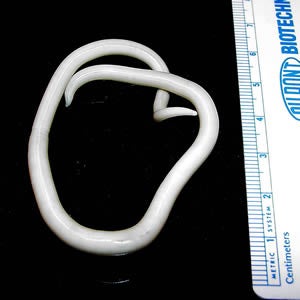A team of researchers found 2,700-year-old eggs of parasitic intestinal worms under a stone toilet in what is now Israel. The team suspects the worms may have been responsible for poor health of some of the residents of the palatial complex.
The toilet, which dates to the 7th century BCE, was found in 2019 in southern Jerusalem. The research team excavated the cesspit underneath the toilet, in hopes of finding information on the sanitary conditions of the time. They identified four parasitic worm species known to infect humans, described in a recently published paper in the International Journal of Paleopathology.
When it was in use, the toilet was located in the garden of a large estate. Based on the site’s scale and the decorative stone carvings found therein, its inhabitants were likely wealthy. But evidently that wealth didn’t keep them from ingesting several parasites: eggs of whipworm (Trichuris trichiura), tapeworm (Taenia), roundworm (Ascaris lumbricoides), and pinworm (Enterobius vermicularis) were found underneath the toilet.

“These are durable eggs, and under the special conditions provided by the cesspit, they survived for nearly 2,700 years. Intestinal worms are parasites that cause symptoms like abdominal pain, nausea, diarrhoea, and itching,” said Dafna Langgut, a paleobotanist at Tel Aviv University and the lead author of the paper, in a university release. “Some of them are especially dangerous for children and can lead to malnutrition, developmental delays, nervous system damage, and, in extreme cases, even death.”
These parasites still exist today. Roundworms are ingested by humans through contaminated food (or otherwise somehow ingesting dirt), and tapeworms can infect us through raw or undercooked beef.

The research team noted that human faeces may have been used as fertiliser during the 7th century BCE, meaning the parasites would’ve had plenty of opportunity to thrive and spread, especially given the lack of sanitation at the time. Parasites have also been found at sites like Acre, where a major battle of the Third Crusade occurred, and Qumran, where the Dead Sea Scrolls were found.
The recently discovered cesspit is not the only ancient toilet known in the region. A cesspit at Tell el Ajjul dates to between the 15th century BCE and the 13th century BCE, and another dates to the mid-14th century BCE. Stone toilet seats have been found in archaeological contexts in the country’s north and in the City of David, a sprawling archaeological site near the Temple Mount. Parasitic eggs were found in the City of David, as well.
Modern advances in hygiene — things like plumbing, hand washing, and disinfectants — mean we have more defences against these parasites today. But they remain a major cause of sickness, with the CDC estimating that over a billion people around the world are infected with the roundworm species found at the site.
More: Rare, Nearly Extinct Parasite May Have Resurfaced in Vietnam, Doctors Say
Editor’s Note: Release dates within this article are based in the U.S., but will be updated with local Australian dates as soon as we know more.
